Seventy-five years ago tomorrow, the world’s attention was focused on events overseas. The Nazis had just bombed an English port, and the Axis powers were gaining momentum. On the front page of the New York Times Sunday edition for March 29, 1941, President Franklin D. Roosevelt called on the American people to stand firm in support of its Allies who were blocking “dictators in their march toward domination of the world.” Readers today won’t recognize the political climate; looking back on the recent presidential election, FDR praised his opponent, saying “The leader of the Republican Party himself — Mr. Wendell Willkie — in word and action, is showing what patriotic Americans mean by rising above partisanship and rallying to the common cause.”
Meanwhile, back at home women were buying Easter hats – just $19.95 at B. Altman. The first Peabody Awards, dubbed “Pulitzer Prizes of air,” had just been announced; the Book-of-the-Month Club featured Ernest Hemingway’s For Whom the Bell Tolls; and a two-room studio at the Chelsea Hotel could be had for $19 a week. Budd Schulberg’s novel What Makes Sammy Run? was reviewed in the Book Review, and an article in the Magazine explored the question: “Are Movies Good or Bad” for children?
And then there was this photograph, which ran under the headline “Last ‘Cowboy’ Rides Over Tenth Ave. Route; Tracks Now Elevated, Horses Get New Job.”
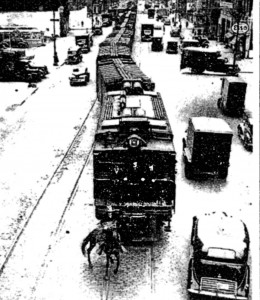
George Hayde, the last West Side Cowboy. March 29, 1941. Copyright Times Wide World/The New York Times/Redux. Used with permission
The picture captures George Hayde, age twenty-one, who became New York City’s last urban cowboy with this final ride up Tenth Avenue. He and “his faithful bay, Cyclone” were leading a line of fourteen rail cars loaded with oranges. They were performing, for the last time in history, a unique job created by an 185os city ordinance that permitted freight trains to share the busy streets with pedestrians, dog-carts, bicycles, cars and trucks, on condition they observe a speed limit of six miles per hour and that “a proper person… precede the trains on horseback to give necessary warning in a suitable manner on their approach.” [For rare video of the West Side Cowboy riding up Tenth Avenue, click here.]
These “proper persons” came to be known as West Side Cowboys, and to give their warning they waved a red flag by day and a red lantern after sundown. Still, so many people were injured and killed by trains that Tenth Avenue became known as “Death Avenue.” In 1934, as part of Robert Moses’ West Side Improvement Project, the tracks were elevated and tucked behind factories and warehouses, mostly out of sight. Trains continued to run on the avenue for another seven years, until George and Cyclone brought the practice to an end. They did not, the Times confirmed, exceed the speed limit on their final ride, and afterwards Cyclone got a new job at a riding academy.
The story of the West Side Cowboy, along with photographs that document this unimaginable practice — freight trains and horses lumbering up the avenue — became a popular part of the High Line’s creation story, and have been reproduced countless times since Robert Hammond and Joshua David founded Friends of the High Line in 1999. I wrote about it in my book and in umpteen articles on this blog (including this one, which includes rare video footage of a train running south on Tenth Avenue). But in the process of doing photo research, I discovered something I hadn’t realized before: the famous photograph we all know and love, the one that became iconic around the world as people told and retold the story of the High Line, is not just any old West Side Cowboy. It is, in fact, of George Hayde:
The more I searched, the more I learned about his final ride. For example: in the photo above, George and Cyclone have just passed the old Merchants Refrigerating Company warehouse (today the headquarters of the Drug Enforcement Agency) and are crossing 18th Street. In another photo taken moments later, Cyclone gets a bit feisty and rears up, perhaps because he’s not used to having his photo taken:
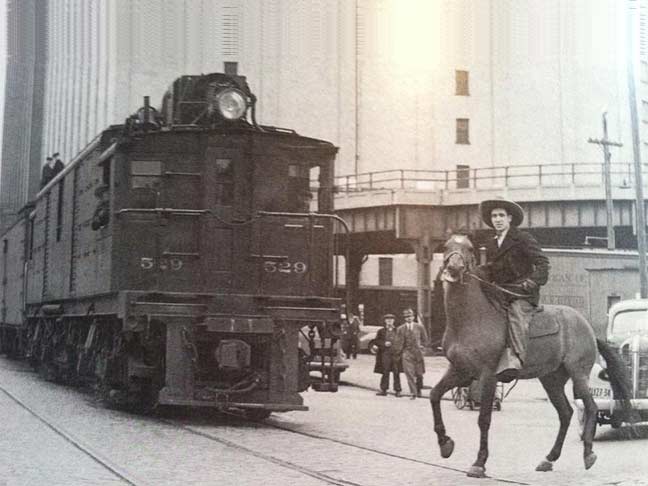
But notice something about the train in the photo above: there’s no one standing at the front. Now look at another iconic High Line photo, this one taken a few blocks later, as the train passes the former R.C. Williams warehouse, today’s Avenues School, at 26th Street. Note that three men have hopped aboard to take part in the historic ride. [Note: click on a photo to enlarge it.]
But the most exciting discovery I made is that the last photograph that (to my knowledge) exists of this final freight train on New York City streets, was taken from the High Line itself. Look at it again:
This is a crummy screenshot (see my note about why I used it below), but you can see the three men, George’s big floppy hat and wide, triangular stirrups. And more important: you can also see a sign that says “Esso” in the upper right hand corner. A bit more research confirmed that in the 1940s there was indeed an Esso station on the southwest corner of Tenth Avenue at 29th Street:
But a puzzling question remains: in the pre-drone era, how did the photographer manage to get a photograph of George and Cyclone from above, in the dead center of Tenth Avenue? And then my friend Randy Johnson, who oversees construction of the High Line’s final section known as the Tenth Avenue Spur, invited me to have a look at the work-in-progress. For the fun of it, I snapped a shot looking south on Tenth Avenue:
As it turns out, I was standing in exactly the same spot as the photographer who captured George and Cyclone in 1941. Today the traffic goes only in one direction (north), the streets are paved, not cobbled, there are no railroad tracks to be seen, and a black SUV has replaced the cowboy and his faithful bay.
There’s one other cool detail worth pointing out. In the photo of the Esso station, have a look at the tenement on the opposite side of the High Line, and note the distinctive cutaway pattern on its exterior wall. Now look at an aerial shot I took from the roof of the Morgan Mail Facility in July 2012, which shows that old building, still recognizable by its strange, layered exterior:
The people who live in this former tenement installed window boxes that always have lovely, well-cared flowers, which I’ve been photographing for years. (See here for a close-up.) Back then, there was an auto repair and collision shop where the Esso Station once stood; today, it’s a construction site for a new condominium, one of dozens that now line both sides of the High Line. (My 2012 picture also captures the wonderful pasting by the artist JR of Brandon of Many Ribs from the Lakota Tribe.)
It’s hard to decide what’s most surprising about the many changes this little remembrance of George Hayde’s final ride conjures. The fact that 75 years ago there were mile-long freight trains that ran in both directions along Tenth (and Eleventh and Twelfth) Avenues? That the President was praising the patriotism of his rival? That cowboys were employed in Manhattan? That cobbled streets gave way to bike lanes? That former tenement buildings now have giant works of work on their exterior walls? That the DEA has its headquarters in an old refrigerated warehouse along the High Line?
Take your pick. In any case: Happy Anniversary, George and Cyclone.
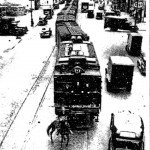
A NOTE ABOUT THE CRUMMY SCREENSHOT: I discovered the image at the top of this post while doing photo research for a lecture. It’s apparently buried somewhere deep in the archives of the New York Times, and to get a clean, digital print I was required to pay a minimum fee of $250 to initiate a search that may or may not have been fruitful. Instead, I was allowed to use my own screenshot from the actual newspaper and pay a reasonable licensing fee. Viewers of the PBS NewsHour will remember a great story last month about newly discovered photos depicting historic moments and well-known figures in African-American history that the Times recently unearthed from its archive. Here’s another example of what lurks in that archive. Now, perhaps, the newspaper will send someone into the nether reaches of its filing kingdom to find the print, digitize it, and share this gem that has been hidden away for 75 years. [Copyright Times Wide World/The New York Times/Redux. Used with permission]

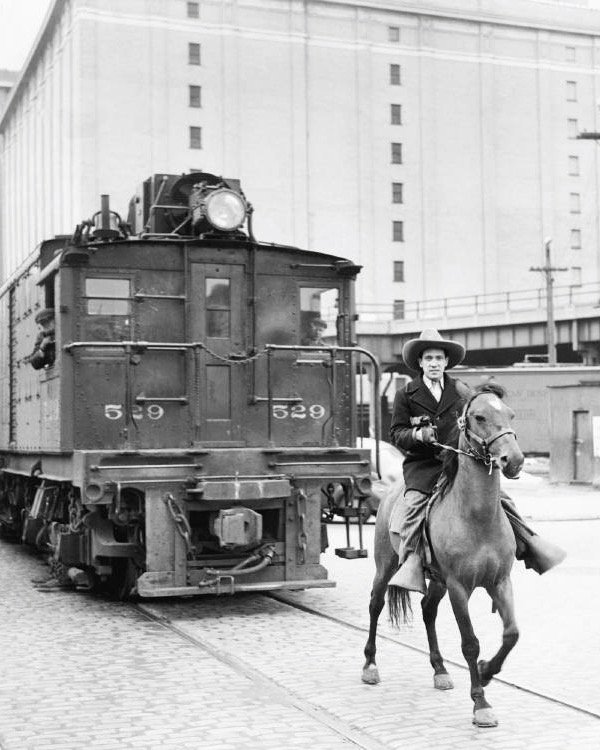
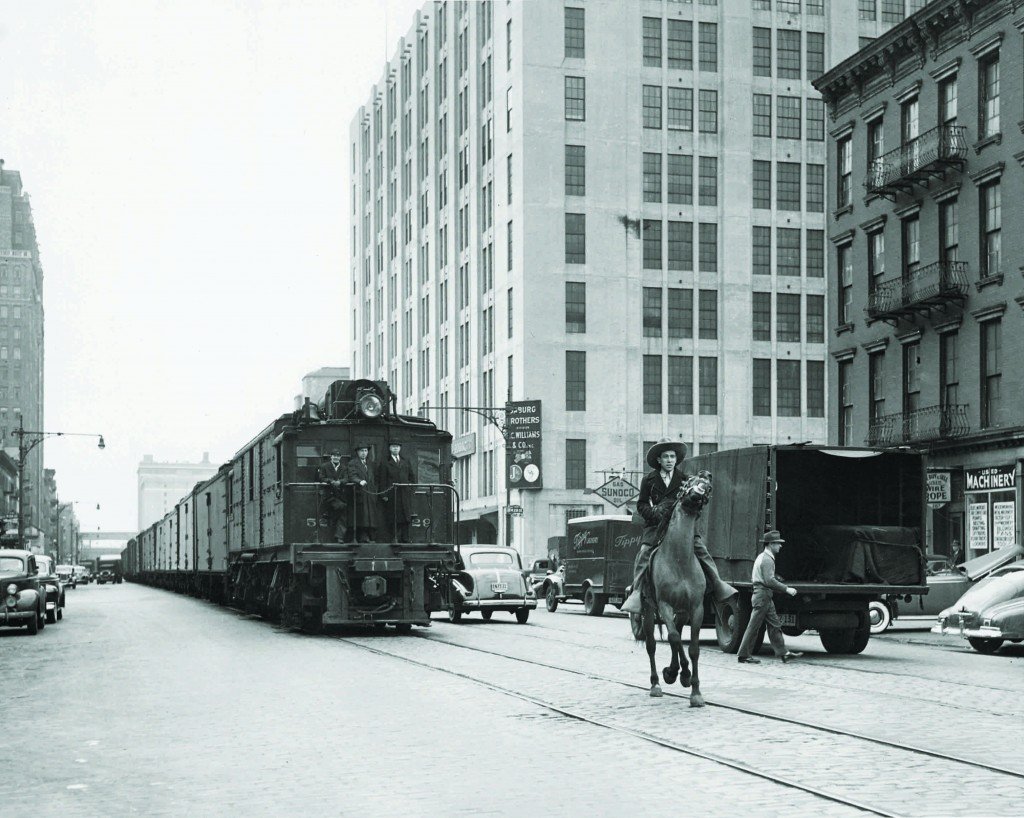
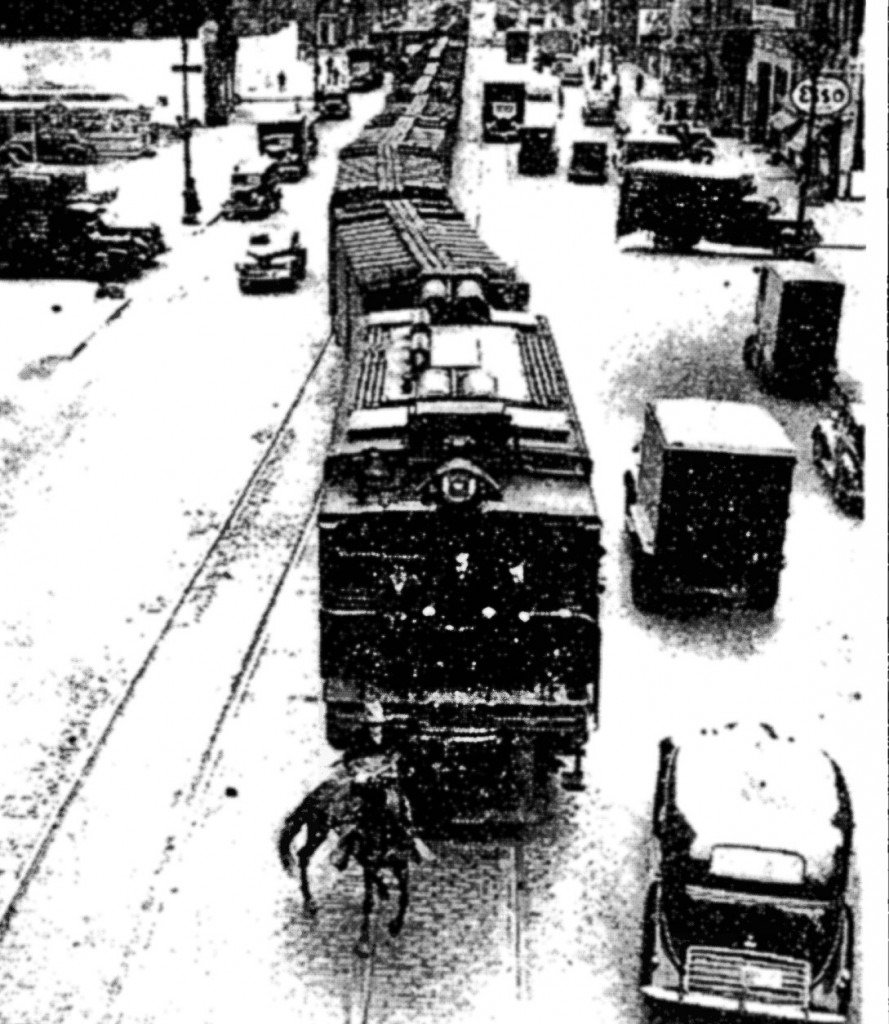
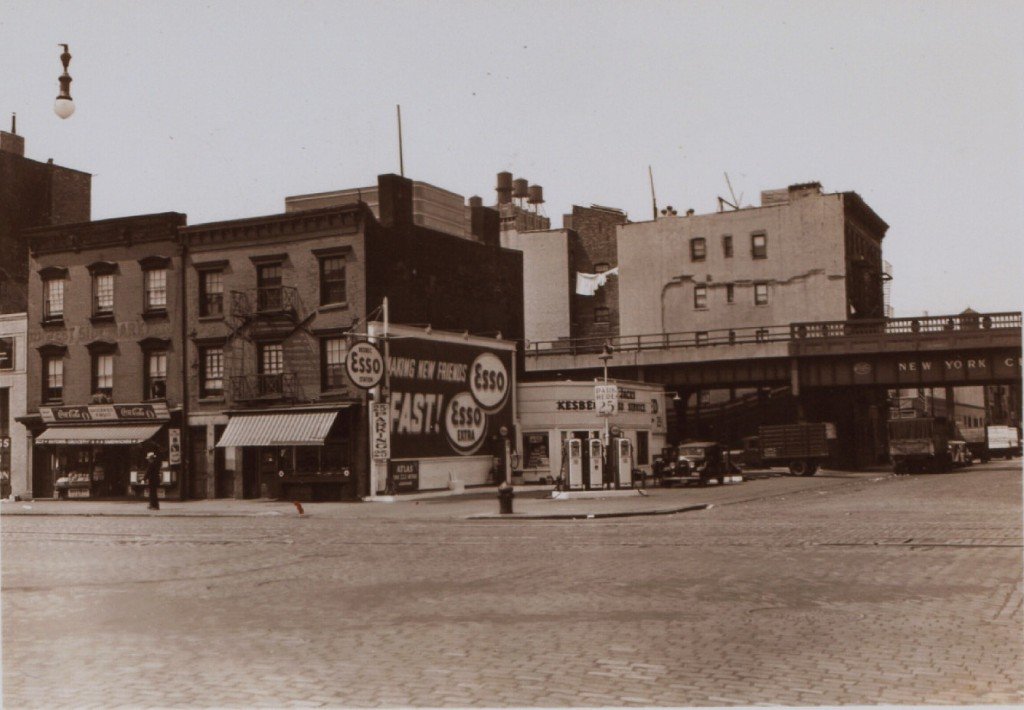
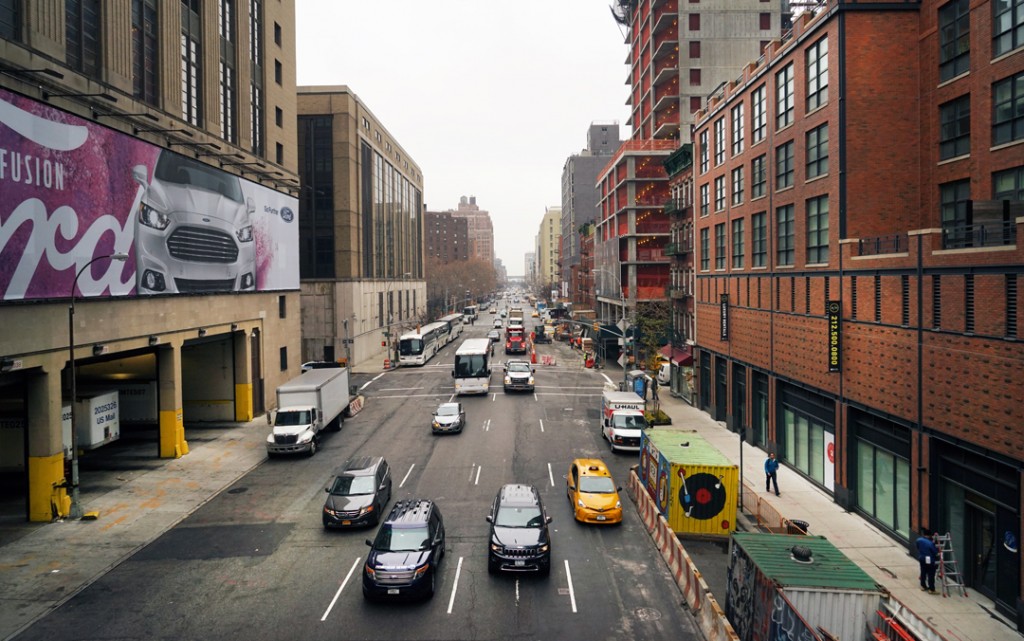
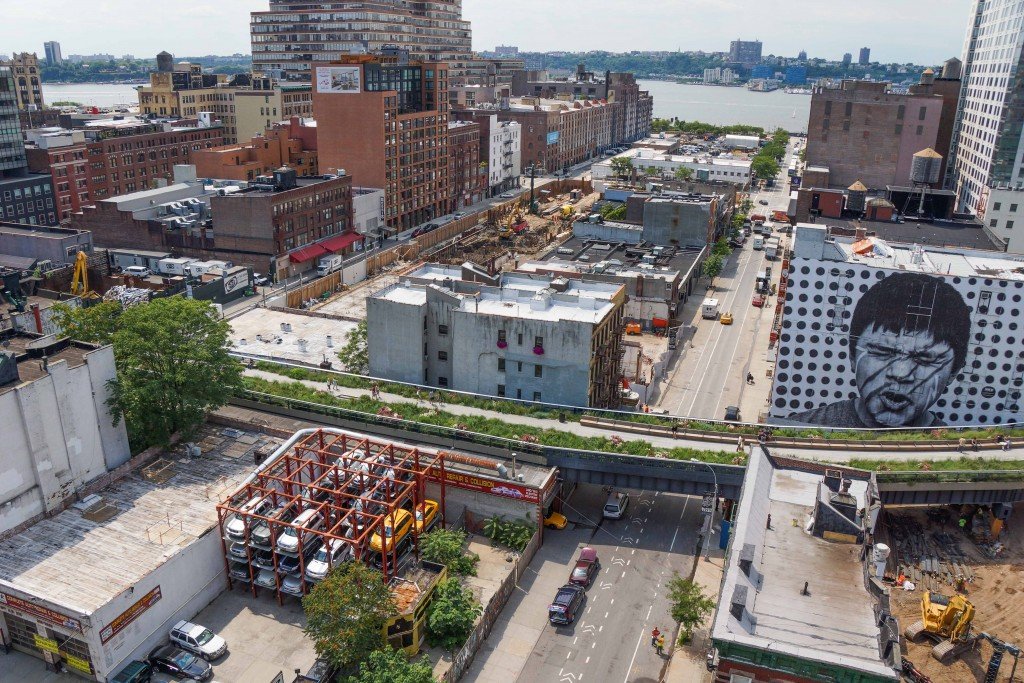

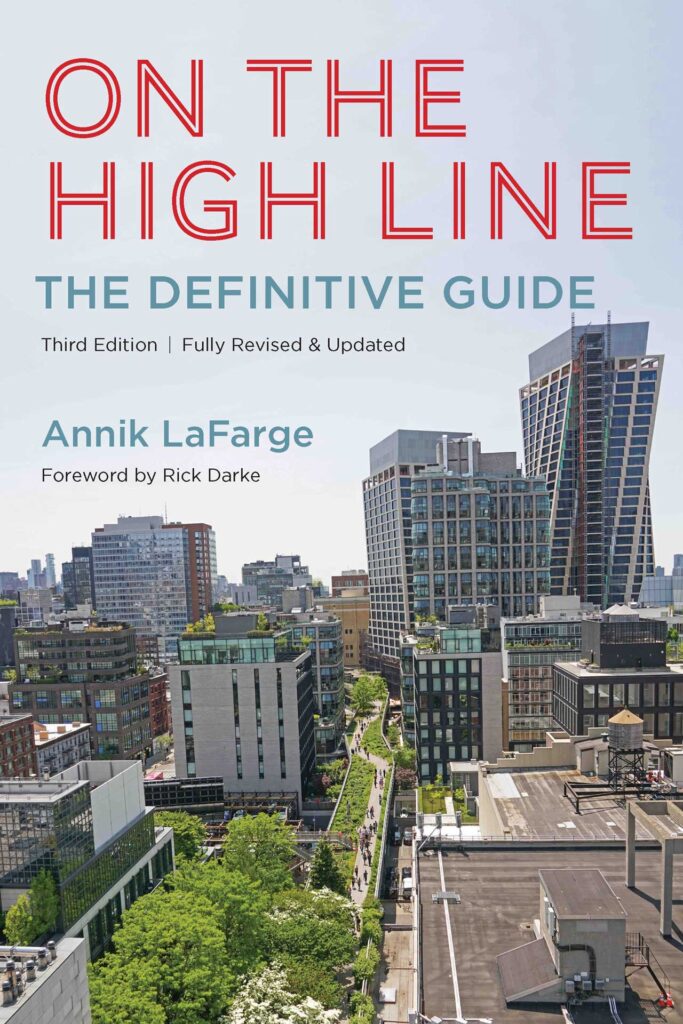


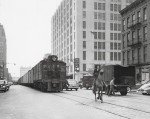

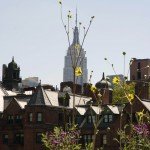

Thanks for this. A great short history of the Cowboys’ last days. My dad remembered the cowboys and the fact that the High Line was greeted as a great urban improvement when it opened. Dad said that West Side mothers wept that day; the RR had been such a killer, and its threat had loomed so threateningly over the childhoods of west side kids and their parents for so long. I guess even with the cowboys, kids and moving trains on the same level is just not a safe proposition.
Brendan, thanks very much for your comment and remembrance.
That was my dad, the Last Urban Cowboy. Wow. great pictures and story.
I love this history, the photos and now, the song that you have posted. Thank you for sharing this amazing history. Extraordinary.
George Hayde was my fathers brother. He is one of 10 with my dad being the youngest. Is there anyway I can get a hold of the original photographs you have posted?
Re: the tenement building with the strange exterior cutaway pattern.
The pattern is the outline left from a building which shared a common wall with the tenement. When the smaller building was demolished (probably for the construction of the High Line) the ghostly outline was left for us to see over 80 years later.
Too bad we can’t go back even earlier and get a look at that older building before demolition!
Thanks for the great story!
Thanks for your comment, Gary. That building is at 503 W. 29th Street, and some day I’ll do a deep dive into the history of that lot and see if you’re right, it’s a very interesting thought. Meantime, here’s a photo of that building with its Gay Pride flag, taken in June 2021: https://www.livinthehighline.com/gay-pride-flag-28th-street/